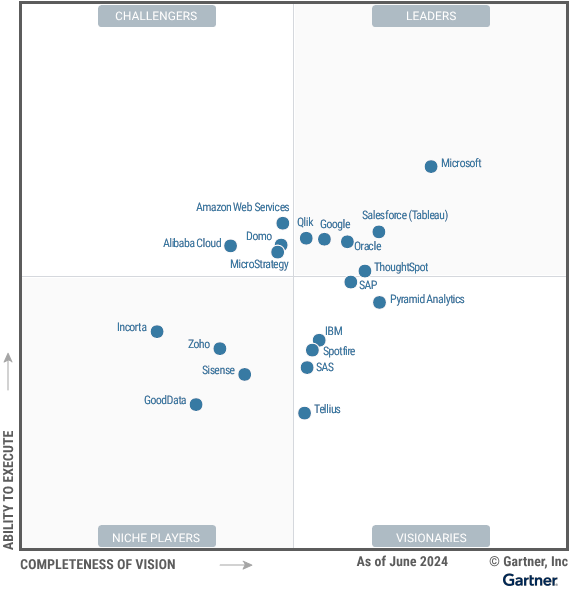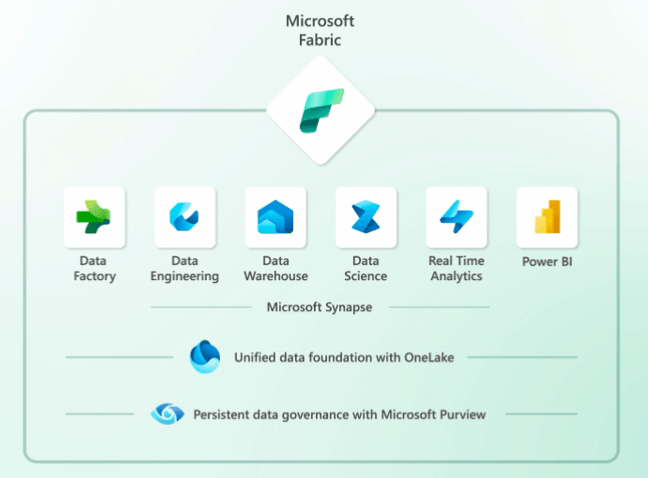Why Microsoft Fabric Is the Ideal Platform for AI-Ready Semantic Modelling
In today’s AI-driven analytics landscape, context is everything. It’s no longer enough to just collect data or run models—what separates noise from insight is meaning. That meaning comes from a well-structured semantic model, and Microsoft Fabric stands out as the most comprehensive platform for building, governing, and scaling that layer across the enterprise.
Fabric offers a uniquely integrated ecosystem that brings together data engineering, analytics, AI, and governance under one roof. Combined with Power BI, it gives organisations the tools to create robust, flexible, and AI-ready semantic models that support both self-service users and advanced automation—making it the ideal foundation for modern, AI-optimised, business intelligence.
From Travel Guides to Marketplaces: Why Structure Matters
If you’ve read my previous article (Why Your AI Strategy Needs Robust Semantic Modelling), you’ll know I like to think of semantic models as travel guides—helping users and AI navigate complex data landscapes with confidence.
Another analogy I find especially helpful—particularly when thinking about the broader BI architecture—is to view your platform as a modern e-commerce marketplace. Your data sources are your suppliers. Data pipelines are the logistics network. Lakehouses and data warehouses serve as your stockroom infrastructure. And the semantic model—your curated datasets and governed KPIs—is the digital storefront.
This is where your end users shop for insight. Products (data points) are catalogued, tagged, and promoted. Key information is highlighted. Everything is labelled, traceable, and optimised for discovery and decision-making. And whether users arrive through Power BI, Excel, Copilot, or an API endpoint, they’re always interacting with the same reliable storefront of curated insight—consistently presented, context-rich, and ready to explore.
This is where Microsoft Fabric shines. Recognized as a Leader in the 2024 Gartner Magic Quadrant for Analytics and Business Intelligence Platforms, Microsoft has been acknowledged for its completeness of vision and ability to execute. Fabric's unified approach to data integration, analytics, and AI empowers organizations to build agile, enterprise-grade data platforms. By combining robust semantic modeling with advanced tools like Copilot and seamless GitHub integration, Fabric enables businesses to transform their data into actionable insights efficiently.
Semantic Modelling in Fabric
Power BI’s semantic layer makes it easy to create data models that are not only performant but deeply user-friendly. With built-in features like descriptions, synonyms, KPIs, and display folders, every model comes equipped with a native data dictionary. This makes documentation intuitive and ensures that both human users and AI agents can understand the structure and meaning of your data.
For those who want to go further, tools like Tabular Editor (both the free and commercial versions) and XMLA endpoints offer enhanced control and efficiency. While not required, Tabular Editor unlocks a powerful layer of productivity for advanced modellers—supporting rapid, scriptable development of complex models, custom perspectives, calculation groups, and robust security layers. It also provides features like best-practice validations, bulk editing, and Git integration, making it ideal for teams who want to scale their modelling efforts with precision and speed.
What truly sets Fabric apart for professional semantic modelling is its recently improved support for GitHub and CI/CD workflows. Whether you're making iterative tweaks or managing large-scale model deployments, Fabric accommodates a range of agile development styles. Think of it as running a dynamic, evolving digital storefront in your e-commerce data marketplace—stable and consistent for consumers, yet flexible behind the scenes to support continuous improvement. Together, Fabric and tools like Tabular Editor empower teams to model with agility, confidence, and control.
OneLake, Direct Lake, and Headless BI
Fabric offers unprecedented flexibility with its unified storage layer—OneLake. Whether you're using Dataflows Gen2, Lakehouse, or the new Data Warehouse experience, you can model directly on top of your curated tables using Direct Lake mode. This reduces duplication, boosts performance, and preserves lineage.
And thanks to headless BI support, your semantic models aren’t locked into Power BI visuals. With APIs and XMLA endpoints, you can surface these models in Excel, third-party analytics platforms, or even your own AI applications. The model becomes a universal logic layer—your digital storefront available through every channel, offering a consistent shopping experience for insight.
AI-Optimised BI: Copilot and Fabric Data Agents
AI is only as smart as the context it’s given. LLMs can mimic understanding, but without structure, they hallucinate. This is where semantic modelling becomes mission-critical.
Fabric’s deep integration with Microsoft Copilot and emerging Fabric data agents means AI tools can query your semantic layer directly, understanding key business concepts, definitions, and hierarchies. It’s the difference between a tourist guessing at a foreign menu and a local guiding them through a curated tasting menu.
Semantic modelling transforms AI from a guessing machine into a strategic partner.
Governance and Trust with Microsoft Purview
As your e-commerce platform expands, so too does the need for oversight. Microsoft Purview provides end-to-end governance for Fabric environments. Lineage tracking, data classification, sensitivity labels, and access controls ensure your semantic models are not only powerful but trustworthy.
Combined with Fabric’s new Metrics Layer, organisations can centralise KPI logic across multiple semantic models, promote certified metrics, and ensure consistency across reports and departments—all governed and discoverable through Purview.
Credit Radacad.com
Microsoft Fabric doesn’t just support semantic modelling—it elevates it. It gives you the supply chain, the digital storefront, the product catalogue, and the intelligent recommendation engine to run a strategic, AI-powered e-commerce platform for insight. In an era of data democratization and AI ubiquity—where everyone from a summer intern in HR to an enterprise-grade LLM wants access to your data—what makes the difference isn’t just volume or velocity, but clarity and consistency. Fabric empowers you to build a unified, governed data platform in an agile way—so that no matter who’s browsing your digital storefront, they’re seeing accurate, well-organized, and trustworthy insight ready for action.


